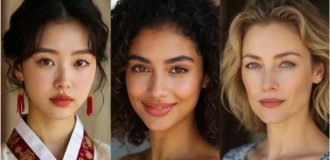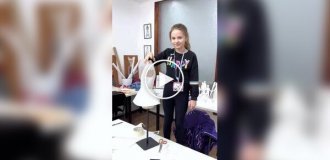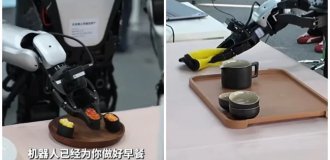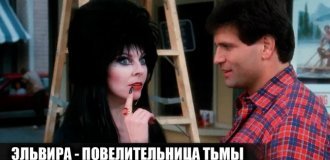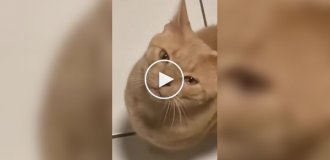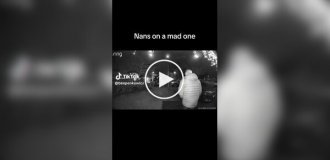The most important and obligatory part of everyday and festive Russian clothing is women's hats. The headdress said a lot about the woman wearing it; it was a “talking” part of the national costume. Let's try to understand the rules of wearing and types of hats.

A headdress could tell a person looking at a woman what province she came from, what her social status was, her approximate income, but most importantly, whether she was a married woman or a girl of marriageable age.

The division in hairstyles between young unmarried girls and married women was very clear. A girl always wore one braid and always (in the warm season) exposed the top of her head and the braid itself, and a married woman had to have two braids, but her hair should always be hidden from prying eyes. The wedding even included a ritual of braiding - a girl's braid was unraveled and then remade into a special woman's hairstyle.

The girls' braids were decorated with ribbons, but the main beauty of a woman's hairstyle was long, shiny, healthy hair, by which grooms could judge the health of a potential bride. A married woman's two braids symbolized a couple - husband and wife. A married woman's head should always be covered with a scarf or headdress, not allowing even a strand to fall out from under it.
It was considered a huge shame to goof - those. remain bareheaded. Even if the cover was torn off accidentally, for example during a quarrel, the woman had the right to go to court to punish the offender.
Braids were unraveled only during magical rites, during childbirth or at the funeral of parents.

Some hats

A scarf on the head of a married woman, especially after the Baptism of Rus', was considered a symbol of female nobility and purity, submission and humility before her husband and God.
It was also believed that a married woman demonstrated her dependence on her husband with a scarf, and a stranger could not touch or disturb her; the scarf gave the woman a feeling of security, safety, belonging to her husband, added femininity, modesty and chastity.

The main women's headdress for girls had a single base - a wreath (bandage, headband)

Koruna (koruna, hoop, chiltse, pochelok, duckweed, crown) - a Slavic maiden headdress, from the same series as the wreath

Kichka - a headdress on a solid base, was distinguished by its variety and imagination of the solution. Only by shape they distinguish tussocks as horned, hoof-shaped, spade-shaped, bowler-shaped, in the form of a hoop, oval, semi-oval, etc.

Borushka (morkhatka, morshen, collection - headdress of married women, belonging to the type of kokoshnik-collections.). Soft hat embroidered with gold and silver threads

Soroka - an ancient Russian headdress for married women

Nametka (namitka) is an ancient traditional women's headdress of the Eastern Slavs. It is a strip of very thin white kuzhel fabric, tied in a special way around the head

Povoynik (povoy, povoyets from povovat; Ukrainian. ochipok; Belarusian. kaptur) - an ancient headdress of married women, which was a linen cap, sometimes with a hard headband, decorated with galloon, completely covering the hair, braided in two braids and

Ubrus is part of a married woman’s headdress - a towel, a rectangular panel 2 meters long and 40-50 cm wide, richly decorated with embroidery.
It was placed around the head on top of a sublingon - a soft cap that covered the hair - and tied or pinned with pins.

Kokoshnik is the most famous headdress. The truth as we know it, for example, in the Snow Maiden, with her scythe outward, is a modern fiction. Kokoshnik in its original form is a cap on the head.

The one-horned kokoshnik is a chic headdress for a married woman; the hair at the back was hidden under a scarf. The embroidery, the number of jewelry and the size showed the social status of the woman.

The base of the kokoshnik was made of glued or quilted canvas or cardboard. On top, the base was covered with fabric and decorated with embroidery, foil, beads, precious stones, flowers, and pearls. The back of the kokoshnik was often covered with embroidery
The kokoshnik consists of a headpiece (a semicircle on the front side) and a hairpiece or bottom (a cap at the back). The kokoshnik was tied at the back with ribbons. Along the edges of the kokoshnik there could be pearl threads - ryasny, and in front there was a net of pearls - underneath.

Two-horned kokoshnik

One-horned kokoshniks (the last one - with cones - the personification of fertility)

Kokoshnik is a festive headdress and it comes in different types: one-horned kokoshnik, two-horned kokoshnik (in the shape of an isosceles triangle), in the form of hats with a flat bottom and a high headband, saddle-shaped kokoshnik.


Women's holiday suits

